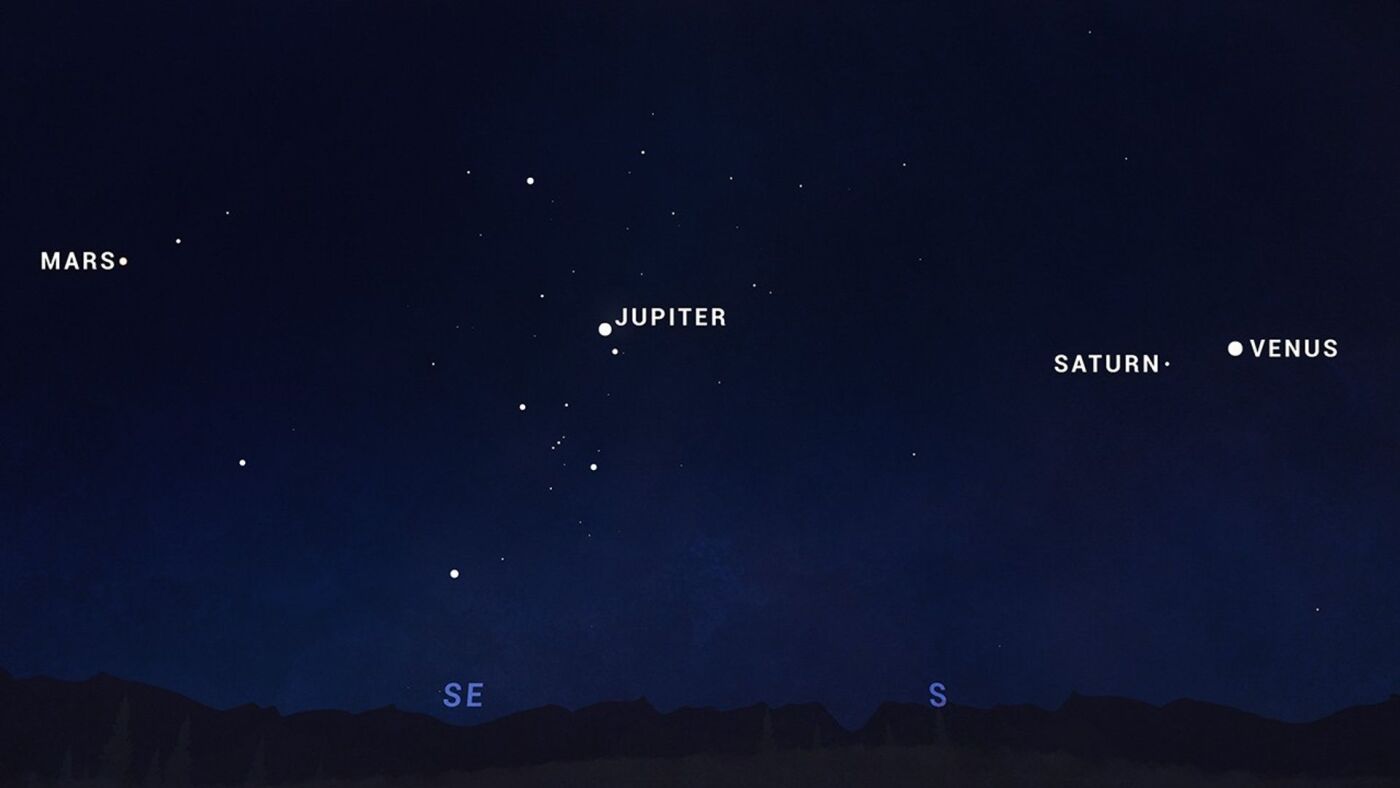

This NASA chart illustrates the alignment of Mars, Jupiter, Saturn, and Venus in a stunning “planet parade” visible in January 2025.
NASA/JPL-Caltech/NASA.gov
Hide caption
Toggle caption
NASA/JPL-Caltech/NASA.gov
On Friday, sky enthusiasts in the United States will witness a remarkable astronomical event where all the planets in our solar system will be visible in the evening sky.
Referred to as a “planet parade,” this rare occurrence will showcase Mercury, Venus, Mars, Jupiter, Saturn, Uranus, and Neptune all aligned along an arc in the night sky. While “planet parade” isn’t an official scientific term, it typically describes the moment when four or more planets can be seen together.
Although the opportunity to observe all planets at once is uncommon, NASA’s Preston Dyches notes that several have been visible since January.
According to Dyches, “When you gaze up at the sky, you’re seeing into our solar system from its circular plane, which all the planets follow as they orbit the sun. You’ll consistently view this alignment as a line, as if you’re on the racetrack observing the other racers.”
While many will be eager to witness this planetary display, astronomers like Pamela Gay from the Planetary Science Institute are also on the lookout for another celestial event that might outshine the parade.
The binary star system known as T Coronae Borealis, or the “Blaze Star,” located in the Northern Crown constellation, is expected to become visible to the naked eye following a nova explosion. This system experiences brightening events approximately every 80 years, with the last nova in 1946. The next event could happen soon, but its timing remains uncertain.
Gay mentions, “We’ve been anticipating this star’s flare-up for several months; it appears that it might be gearing up for brightness.”
For those hoping to witness Pluto’s return, it’s important to note that this former planet, now classified as a “dwarf planet” since 2006, will remain below the horizon during the parade, according to Gay.
To maximize your chances of observing all seven planets, it’s advisable to start looking approximately thirty minutes after sunset. Dyches indicates that there will be a brief opportunity to spot Mercury, Venus, Mars, and Jupiter as twilight descends. Mercury, Venus, and Saturn will be located toward the west, while Jupiter and Mars will be positioned overhead alongside Uranus and Neptune.
Mercury, Venus, Mars, and Jupiter are easily visible to the naked eye, but a telescope will be necessary to view Uranus and Neptune after dusk. Saturn may also prove challenging to observe due to its proximity to the horizon against the fading light of sunset, potentially requiring a telescope or binoculars for assistance. Sky-watching applications can be beneficial in determining the exact locations of these planets.
If you miss this celestial display, another opportunity will present itself in late August when four planets will reappear before dawn. After August, the next planet parade will not occur until late October 2028, when five planets will be visible just before sunrise.











